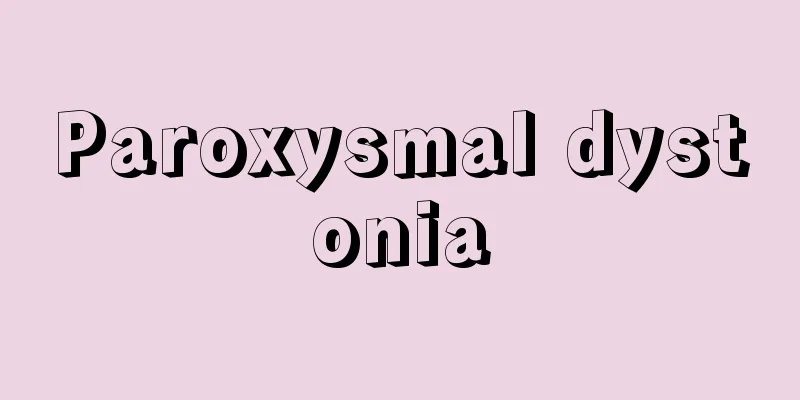Paroxysmal dystonia

|
Paroxysmal dystonia is a relatively common muscle disease and a disease that can have a great impact on people's health and normal life. The incidence of paroxysmal dystonia is relatively high among men. When the disease occurs, certain symptoms will appear. Patients can judge whether they have this disease based on the specific symptoms. Below, we will introduce to you the specific manifestations of paroxysmal muscle weakness. Paroxysmal movement-induced dystonia often occurs in adolescence, mostly in boys, and mainly occurs when there is a sudden change in posture, direction of movement or force load. Sudden voluntary movements in a static state are the most important predisposing factor of this disease, such as suddenly standing up from a sitting position, running after standing for a long time, turning around, raising hands, etc. It can also be induced by non-specific factors such as tension, fright, anxiety, excitement, hyperventilation, etc. There is no loss of consciousness during a seizure, and stopping or slowing movements may terminate the seizure. Paroxysmal movement-induced dystonia can be hereditary or sporadic, with a family history in approximately 60% of cases. The inheritance pattern is mostly autosomal dominant with incomplete penetrance, but there are also reports of recessive inheritance in families. Among familial paroxysmal kinesigenic dystonia, simple paroxysmal kinesigenic dystonia is less common and is often accompanied by IC, BFIS, ICCA, migraine or other neurological diseases. The classic clinical features of paroxysmal movement-induced dystonia include an identifiable cause of the seizure (movement-induced); a short duration of seizures (no more than 1 minute); no loss of consciousness or pain during the seizure; a normal neurological examination and exclusion of other organic diseases; onset is usually between 1 and 20 years of age (not limited to cases with a family history); and response to antiepileptic drugs, especially carbamazepine or phenytoin. About 70% of patients can feel "premonitions" before an attack, such as numbness, coldness, tightness, heaviness, etc. in the affected limbs. During an attack, the patient has no consciousness disorder, and the main manifestations are limb dystonia, dance, athetosis, throwing-like movements, etc.; most of the attacks are unilateral limb attacks, some patients are affected by both sides, and a few have alternating attacks between left and right; 30% of patients may have facial muscles affected during an attack and have speech expression disorders. The attack lasts from a few seconds to tens of seconds, usually not more than 5 minutes. Paroxysmal movement-induced dystonia occurs frequently, with many patients experiencing nearly 20 attacks a day, especially during adolescence, when the number can be as high as 30 to 100 attacks, which gradually decrease after the age of 20. |
<<: Can a hip fracture heal itself?
Recommend
What does premature beats on an electrocardiogram mean?
Premature beats are a heart disease whose main sy...
What to do if you have bloating in your stomach due to bile duct cancer? 3 treatment methods to know
Biliary duct cancer causes great harm to patients...
What are the examination items for liver disease?
There are many ways to check liver disease, such ...
Which foods should never be wrapped with plastic wrap
At present, food sold in plastic wrap can be foun...
What should I do if my arms are cold and sore
I believe that when the cold autumn and winter ar...
What causes sudden testicular pain? Four reasons are more common
The testicle is a very important physiological or...
What kind of tea is good to drink on a hot day
What people want to drink most is cold drinks, bu...
Why does black stool occur when you have diarrhea?
When some people have diarrhea and their stools a...
How long should I take Biostime probiotics?
Biostime probiotics are a kind of health care pro...
What are the main early symptoms of cardiac cancer
Cardiac cancer is very common in life, and it mai...
Experts analyze the causes of death of melanoma patients
Melanoma is a disease that many people know about...
The efficacy of fried Citrus aurantium with bran
The effects of the drug "Stir-fried Citrus a...
Differential diagnosis of early nasopharyngeal carcinoma
Differential diagnosis of early nasopharyngeal ca...
What are the extrapulmonary manifestations of early lung cancer
Extrapulmonary manifestations of early lung cance...
What should I do if my gums swell and ache after my wisdom teeth grow?
If we have wisdom teeth, especially if they grow ...









